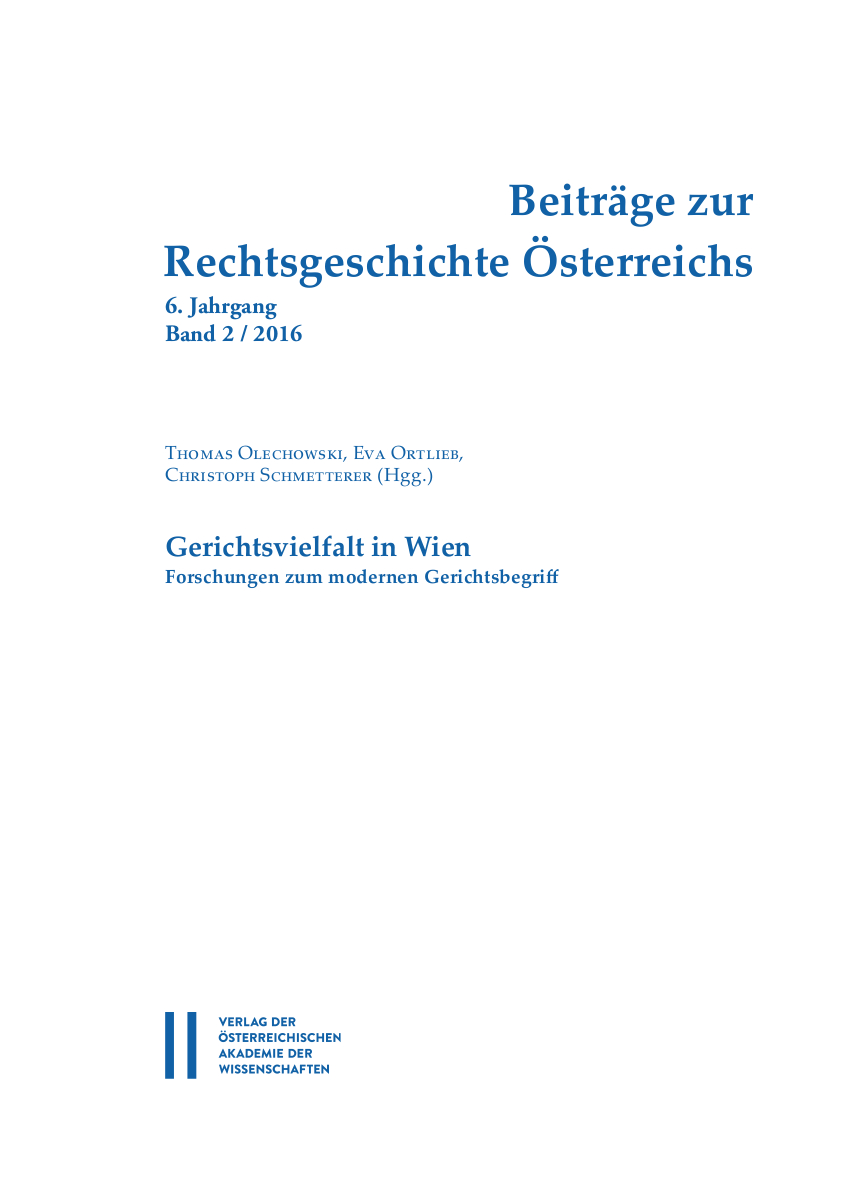
Beiträge zur Rechtsgeschichte Österreichs 2 / 2016, pp. 324-344, 2016/10/11
Gerichtsvielfalt in Wien
Forschungen zum modernen Gerichtsbegriff

This article starts around 1850, a period which saw a new codification of civil and military penal law with a more precise separation of these areas. Crimes committed by soldiers were now defined parallel to civilian ones. However, soldiers were still tried before military courts. The military penal code comprised genuine military crimes like desertion and mutiny. Up to 1912 the procedure law had been archaic as it did not distinguish between the state prosecutor and the judge. But in 1912 the legislature passed a modern military procedure law which came into practice only weeks before the outbreak of World War I, during which millions of trials took place, conducted against civilians as well as soldiers. This article outlines the structure of military courts in Austria-Hungary, ranging from courts responsible for a single garrison up to the Highest Military Court in Vienna. When Austria became a republic in November 1918, military jurisdiction was abolished. The authoritarian government of Chancellor Engelbert Dollfuß reintroduced martial law in late 1933; it was mainly used against Social Democrats who staged the February 1934 uprising. After the National Socialist ‘July putsch’ of 1934 a military court punished the rioters. Following Austria’s annexation to Germany in 1938, German military law was introduced in Austria. After the war’s end in 1945, these Nazi remnants were abolished, leaving Austria without any military jurisdiction.
Keywords: Austria - Austria as part of Hitler's Germany - First Republic - Habsburg Monarchy - Military Jurisdiction